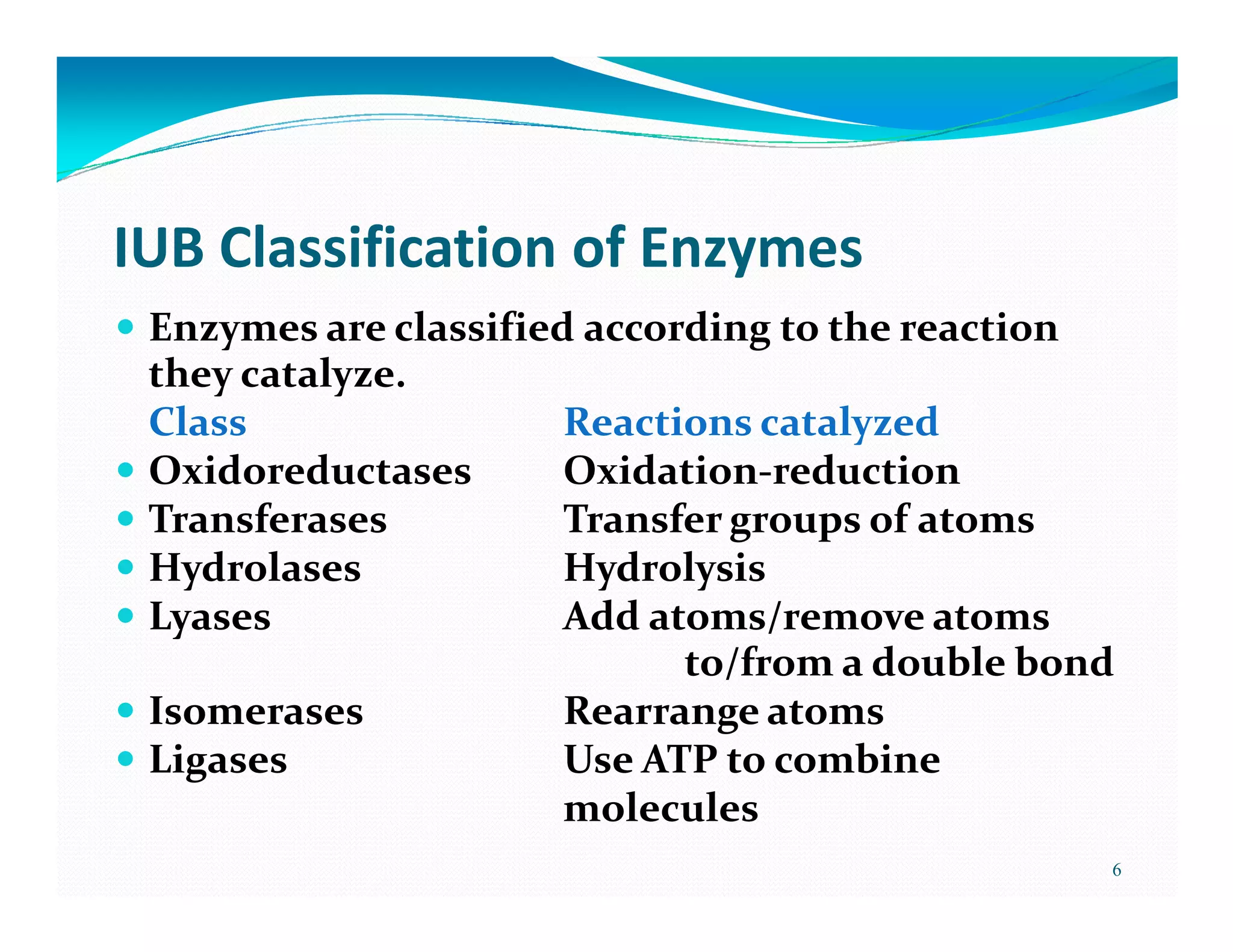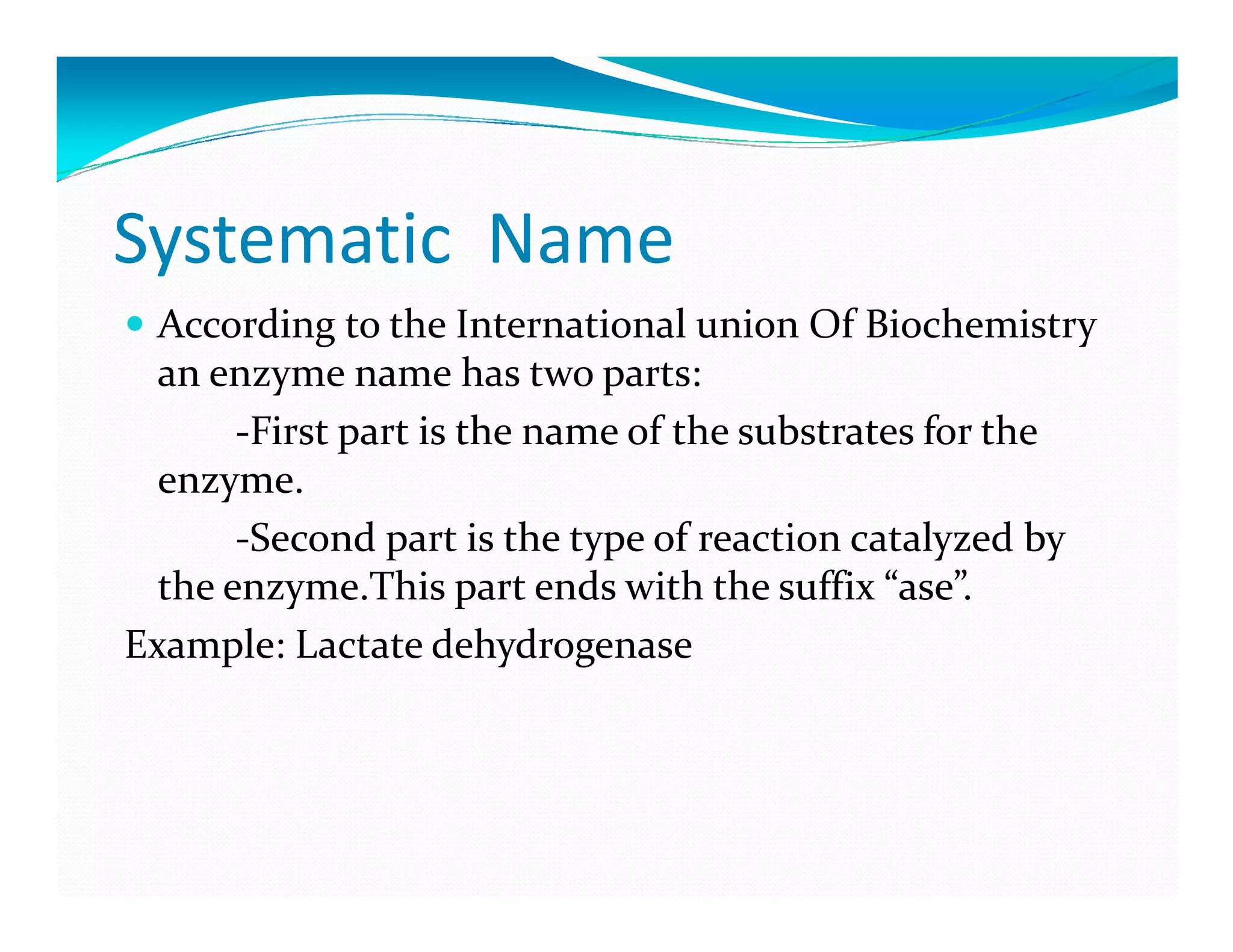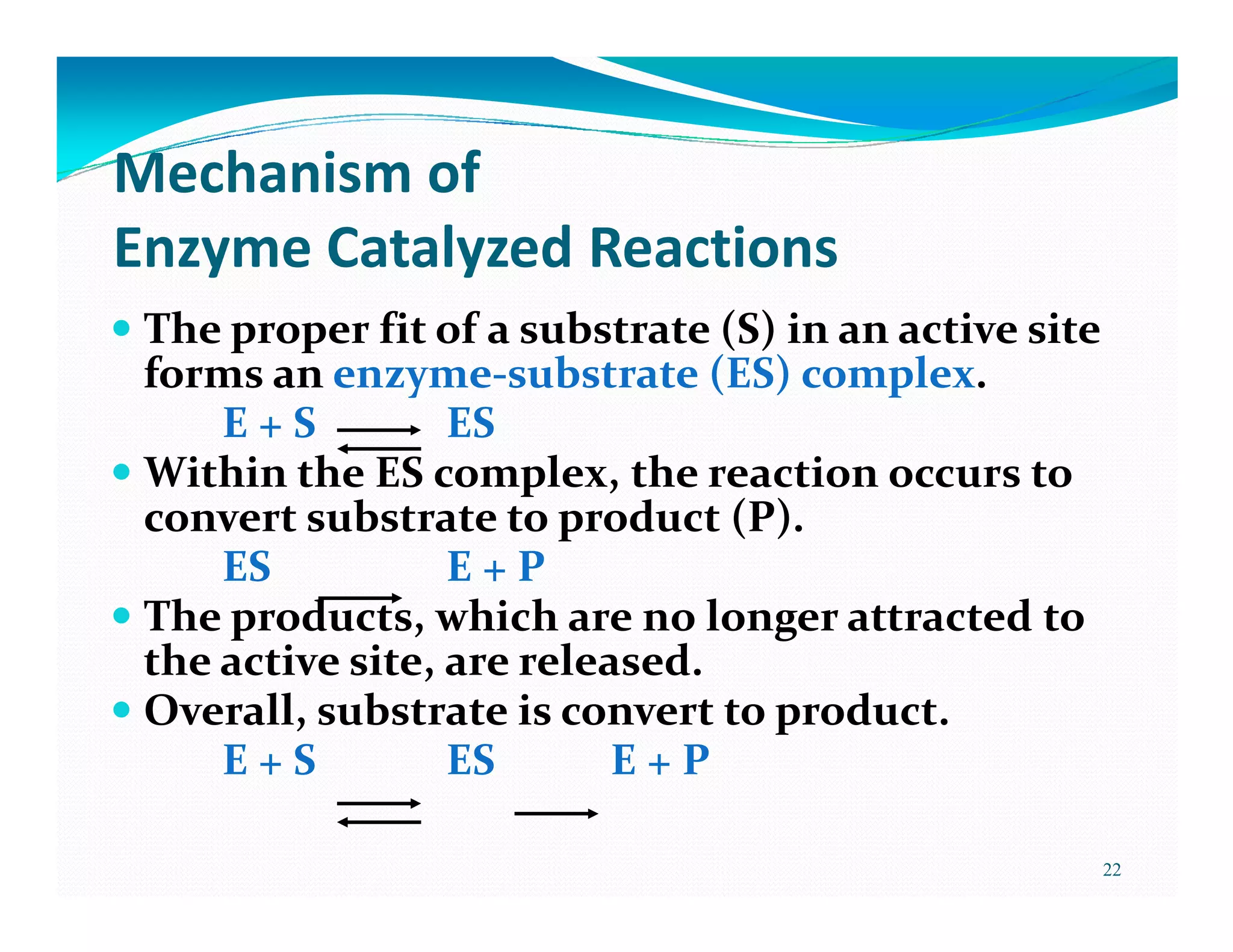The document discusses enzymes and their classification. It defines enzymes as biological catalysts that are usually proteins and increase the rate of chemical reactions. It describes the six main classes of enzymes based on their catalytic activity as well as the Enzyme Commission (EC) numbering system. The key points are that enzymes have unique active sites that substrates fit into, they are most active at optimal temperatures and pH levels, and their reaction rates depend on enzyme and substrate concentrations.
































